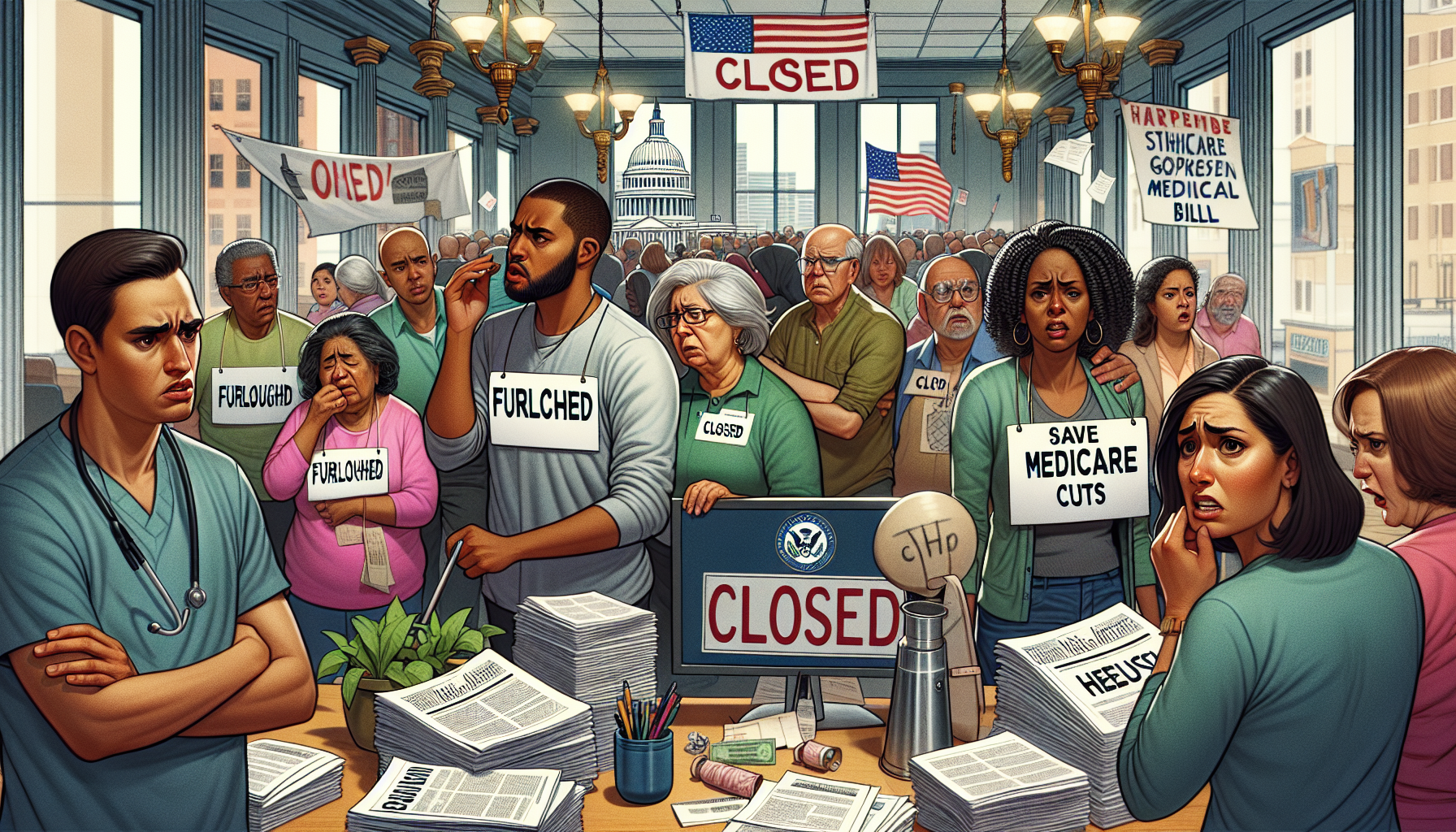
tl;dr
As Congress battles over funding bills, a government shutdown threatens essential services, healthcare access, and millions of federal workers. The debate over Medicaid cuts and tax credits could reshape America's healthcare landscape, with dire consequences for families and the economy.
As the U.S. government inches closer to a potential shutdown, the looming uncertainty has sparked widespread concern among Americans. With Congress deadlocked over funding bills, the federal government faces a partial suspension of operations if lawmakers fail to reach an agreement by October 1. While essential services like Social Security and Medicare will continue, the disruption could ripple across daily life, impacting everything from healthcare costs to federal worker livelihoods.
The core of the debate centers on healthcare funding. Democrats are pushing to reverse cuts to Medicaid outlined in the controversial "One Big Beautiful Bill," which would exclude 8.6 million Americans from the program over the next decade. These cuts include stricter work requirements for able-bodied adults and barriers for immigrants. Meanwhile, the enhanced tax credits from the 2021 American Rescue Plan Act have made Affordable Care Act (ACA) premiums more affordable. Without their extension, health insurance costs could surge. For example, a 49-year-old couple with a child earning $90,000 annually would face an additional $2,718 in premiums next year. The Congressional Budget Office estimates that permanently extending these credits could add 3.8 million people to health insurance rolls by 2035 but would increase the deficit by $350 billion.
A shutdown would also halt non-essential government functions, creating logistical hurdles for citizens. While services like mail delivery, veteran benefits, and law enforcement would continue, others would grind to a halt. Small business loans, mortgage approvals, and National Park access could be delayed, and air travel might face disruptions due to unpaid Transportation Security Administration (TSA) and air traffic control staff. Passport processing and some SNAP benefits could also be affected, particularly if the shutdown lasts weeks.
Federal workers, however, face the most immediate hardship. The White House has warned of mass layoffs unless Democrats agree to a funding bill, a move that could leave thousands without pay. This year’s shutdown could be more severe than the 2018-2019 partial shutdown, which furloughed 380,000 workers and forced 420,000 to work without pay. With the Department of Government Efficiency (DOGE) already overseeing significant job cuts, the threat of further layoffs adds to the tension.
For ordinary Americans, the stakes are high. While critical services like Social Security and Medicare will persist, the ripple effects of a shutdown—ranging from delayed paperwork to higher healthcare costs—could strain households already navigating economic uncertainty. As political negotiations intensify, the outcome will determine whether the government’s partial paralysis becomes a brief interruption or a prolonged crisis with lasting consequences. The coming days will test not only the resilience of federal agencies but also the adaptability of the American public.